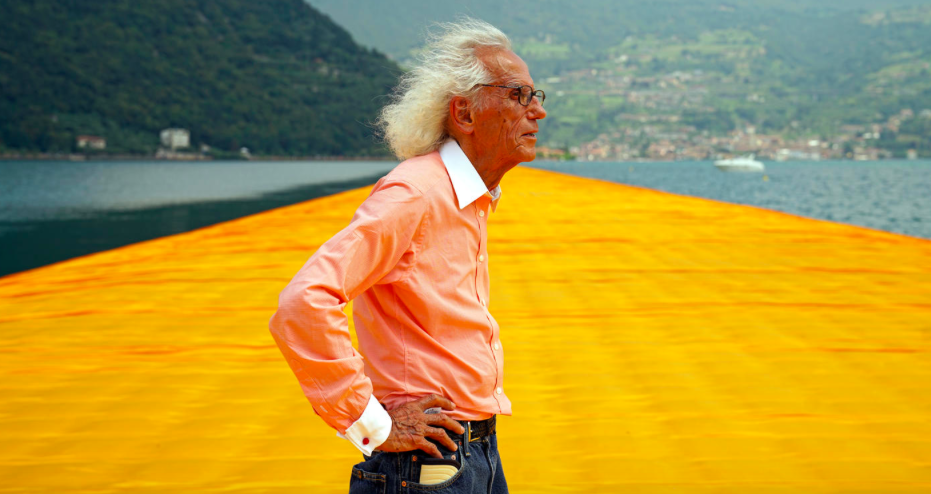Artist Christo has Died at 84

Christo Vladimirov Javacheff, who was known for his monumental environmental artworks with his late wife, Jeanne-Claude Denat de Guillebon, has died. He was 84 years old. Together, known simply as Christo and Jeanne-Claude, they wrapped iconic landmarks in fabric, such as the Pont Neuf in Paris in 1985 and the Reichstag in Berlin in 1995; and mounted thousands of orange gates in Central Park, redolent of Japan's sacred torii gates, in 2005.
Image courtesy to Christo and Jeanne-Claude Official Website
Christo Vladimirov Javacheff, who was known for his monumental environmental artworks with his late wife, Jeanne-Claude Denat de Guillebon, has died. He was 84 years old.

Image courtesy to Christo and Jeanne-Claude Official Website
Together, known simply as Christo and Jeanne-Claude, they wrapped iconic landmarks in fabric, such as the Pont Neuf in Paris in 1985 and the Reichstag in Berlin in 1995; and mounted thousands of orange gates in Central Park, redolent of Japan's sacred torii gates, in 2005.
Christo passed away Sunday 31 May at his home in New York, according to a statement made on the artists' official twitter account.
He is survived by his son, Cyril Christo, a photographer, filmmaker and animal rights activist. Jeanne-Claude passed away following a brain aneurysm in 2009.

New York City, 2004
Christo in his studio working on a preparatory drawing for The Gates
Photo: Wolfgang Volz
© 2004 Christo
After her death, Christo dedicated himself to completing their concepts. In 2016, he realized their work "The Floating Piers" on Italy's Lake Iseo, a project they imagined in 1970. For 16 days, golden pathways appeared on the lake, supported by 220,000 polyethylene cubes. Like many of their works, it was a popular success. Some 270,000 people turned up to walk on water during the first five days.

Christo and Jeanne-Claude, The Floating Piers, Lake Iseo, Italy, 2014-16, Photo: Wolfgang Volz © 2016 Christo
In 2018, Christo unveiled "The London Mastaba," a floating installation on the Serpentine Lake in London made of more than 7,000 oil barrels.

Christo and Jeanne-Claude , The London Mastaba, Serpentine Lake, Hyde Park, 2016-18, Photo: Wolfgang Volz © 2018 Christo
It was the artist's first major public, outdoor work in the United Kingdom. His next work was to appear in Paris, in September 2021 -- the long-awaited wrapping of one of the world's most famous war memorials, the Arc de Triomphe. In May 2020, Christo told CNN he couldn't believe it was actually happening. "I never believed that we'd get permission -- "I was flabbergasted."
Christo and Jeanne-Claude were born on the same day on June 13, 1935 -- Christo in Bulgaria and Jeanne-Claude in Morocco. In 1957, Christo attended one semester at Academy of Fine Arts in Vienna before eventually landing in Paris, where he met Jeanne-Claude in 1958.

Christo and Jeanne-Claude
The London Mastaba, Serpentine Lake, Hyde Park, 2016-18, Photo: Wolfgang Volz
© 2018 Christo
He had already begun wrapping objects, such as furniture and oil drums, and they began working together in 1961. For decades, the couple only used Christo's name, until 1994 when Jeanne-Claude was added retroactively to many works as his collaborator.
The artists insisted that their ambitious projects were about "joy and beauty," as Jeanne-Claude once said in 2002. However, they did not create their works in a political vacuum, and for one of their earliest collaborations they stacked oil barrels to barricade a street in Paris in protest of the Berlin Wall.
Encountering Christo and Jeanne-Claude's temporarily altered land and cityscapes could be an ebullient, perception-altering experience, and they required years -- and sometimes decades -- to pull off. Outfitting the Reichstag took 24 years from concept to completion; the artists considered the preliminary work part of their art too, naming it the "software" period while the "hardware" period encompassed the time when the physical work was materialized.
